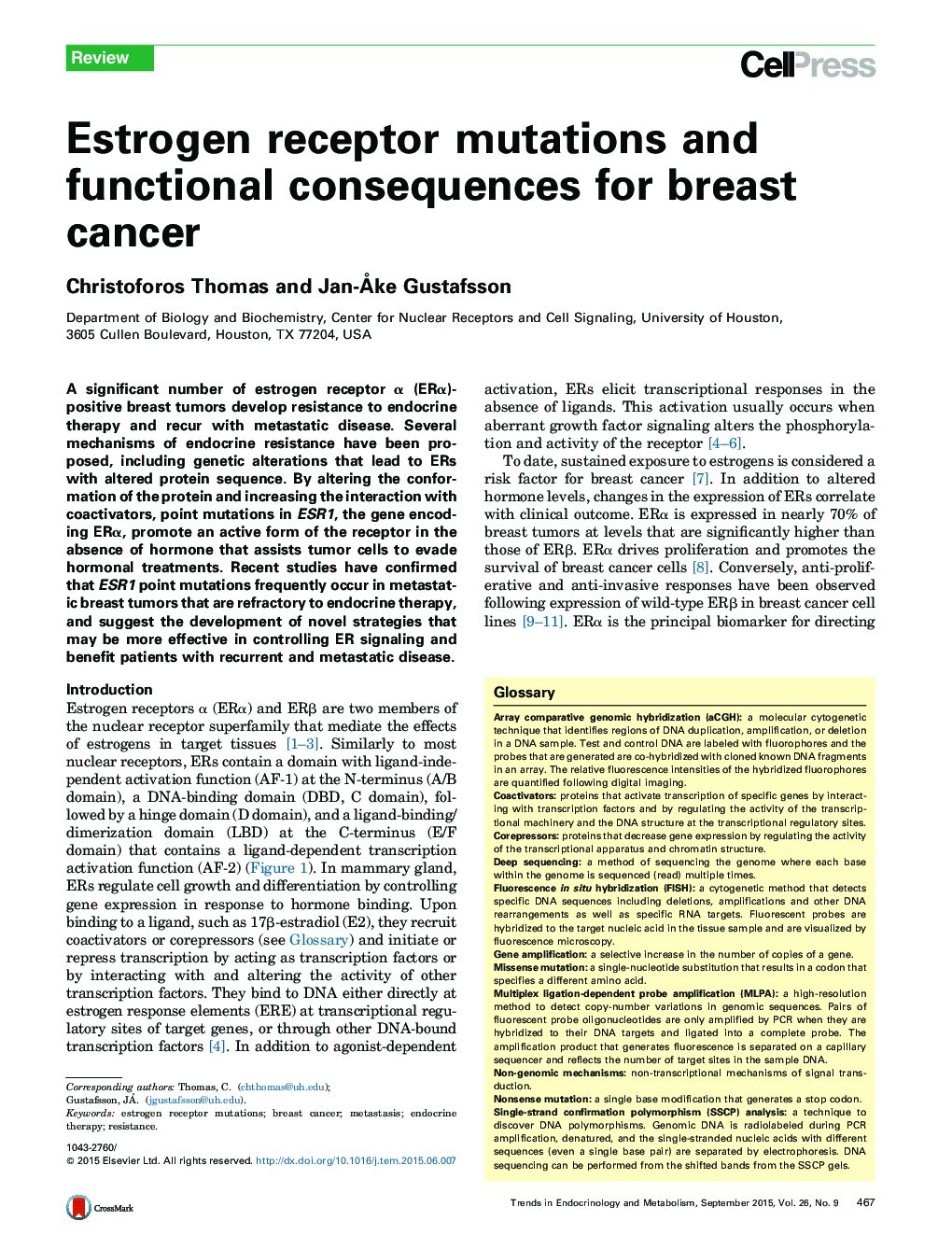| Article ID | Journal | Published Year | Pages | File Type |
|---|---|---|---|---|
| 2810081 | Trends in Endocrinology & Metabolism | 2015 | 10 Pages |
•There is a substantial frequency of ESR1 point mutations in metastatic breast tumors.•ESR1 mutations are implicated in clinical resistance to hormonal therapy.•ESR1 mutations render receptor activity constitutive by altering receptor conformation.•Early detection of the mutations can guide proper selection of therapy.•Novel therapeutics to overcome resistance conferred by the mutations are being tested.
A significant number of estrogen receptor α (ERα)-positive breast tumors develop resistance to endocrine therapy and recur with metastatic disease. Several mechanisms of endocrine resistance have been proposed, including genetic alterations that lead to ERs with altered protein sequence. By altering the conformation of the protein and increasing the interaction with coactivators, point mutations in ESR1, the gene encoding ERα, promote an active form of the receptor in the absence of hormone that assists tumor cells to evade hormonal treatments. Recent studies have confirmed that ESR1 point mutations frequently occur in metastatic breast tumors that are refractory to endocrine therapy, and suggest the development of novel strategies that may be more effective in controlling ER signaling and benefit patients with recurrent and metastatic disease.
